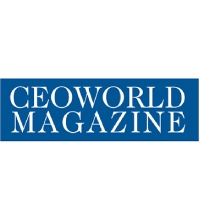The job recruitment cycle has distinct peaks and slumps that can be crucial to take note of when looking to fill or create new positions. Some industries are outliers, but there is generally a trend that both employers and prospective candidates follow. As a general hiring practice, here’s when you can get the best results for filling your vacant positions and optimizing company growth.
January & February – These are known as the best months to fill jobs because people are focused with the new year goals or ready to make changes. Budgets for the year are also fresh and new positions can be created with this money.
March, April & May – The spring is an okay season for hiring. May is typically saturated with new graduates which may or may not affect you depending on if and how many entry level positions your company offers.
June, July & August – The summer is the worst months to hire as both candidates and job recruiters are on vacation and busy enjoying the summer months. If a position unexpectedly opens up there will certainly be people looking, but you will have a smaller hiring pool to choose from.
September & October – The fall, just like the spring, is an okay time to hire but not great. It’s the last wave of people looking for new jobs before settling in for the holidays. If there is any money in the budget left, now would be the time to use it for a new hire.
November & December – It’s no surprise that the winter holiday months are a terrible time to look for a job hire. Most religions have a holiday they recognize during this time and employees will have travel plans or vacation days, or maybe even waiting on a holiday bonus.
HOW THIS AFFECTS “TIME TO HIRE”
Time to hire, not to be confused with time to fill which is the number of days it takes from the moment a job opening is posted to when the offer is accepted, is measured when the candidate enters the pipeline until the offer is accepted.
Knowing you company’s time to hire can help increase efficiency and get the best employees in your company. While you can’t always control when a position opens up, it can be especially useful when creating new positions that need an experienced professional to grow it into something more.
Exceptions by industry
It is also true that not all industries follow this hiring cycle. Seasonal businesses like ice cream shops and holiday retailers will obviously be hiring during or right before the slumps. Their best time to hire is different from the norm, but also attracting a different hiring pool.
If you follow the traditional hiring cycle, you will be competing with other companies vying for the same candidates. Regardless you should always work to sell your company culture and benefits while attracting the best employees.
Know the audience of each job board
You may be wondering where to post your job, as postings aren’t free and you want the best value for your dollar. LinkedIn is typically for large corporations looking for senior level hires. Indeed is a common general job board along with Zip Recruiter. Other job boards such as Monster will have more industrial postings, and Craigslist often has gigs and odd jobs rather than a professional setting.
Are there perks to hiring outside the flow?
Don’t feel like you can only or should only hire within the specified months. Just like you have random openings, there will be random searchers as well. You also might be able to find candidates who can fill a position immediately rather than having to wait two weeks for them to transition out of their former jobs.
For example, some of the best candidates don’t adhere to the main hiring phases. Keep in mind that recruiters and hiring managers are affected by many variables, including market conditions, industry, having to fill roles unexpectedly, and more, so positions can open up at any time.



























